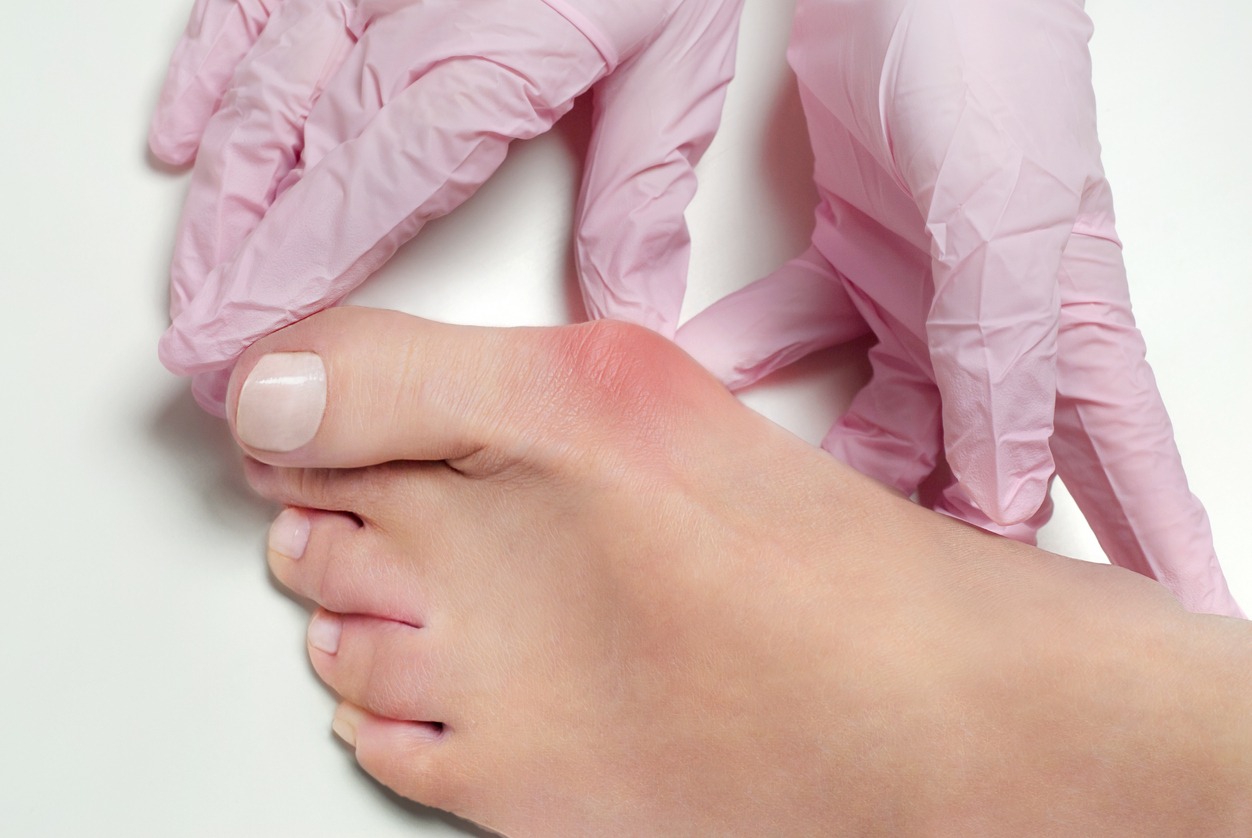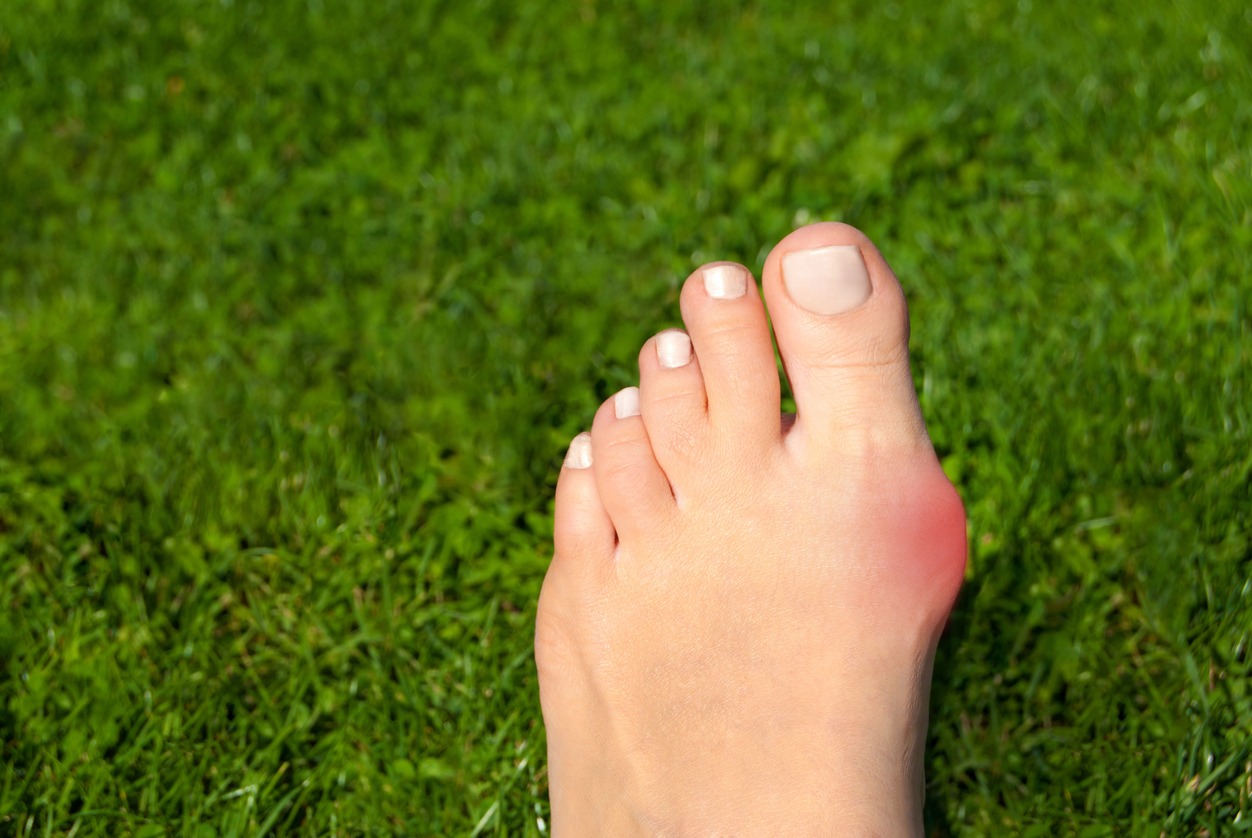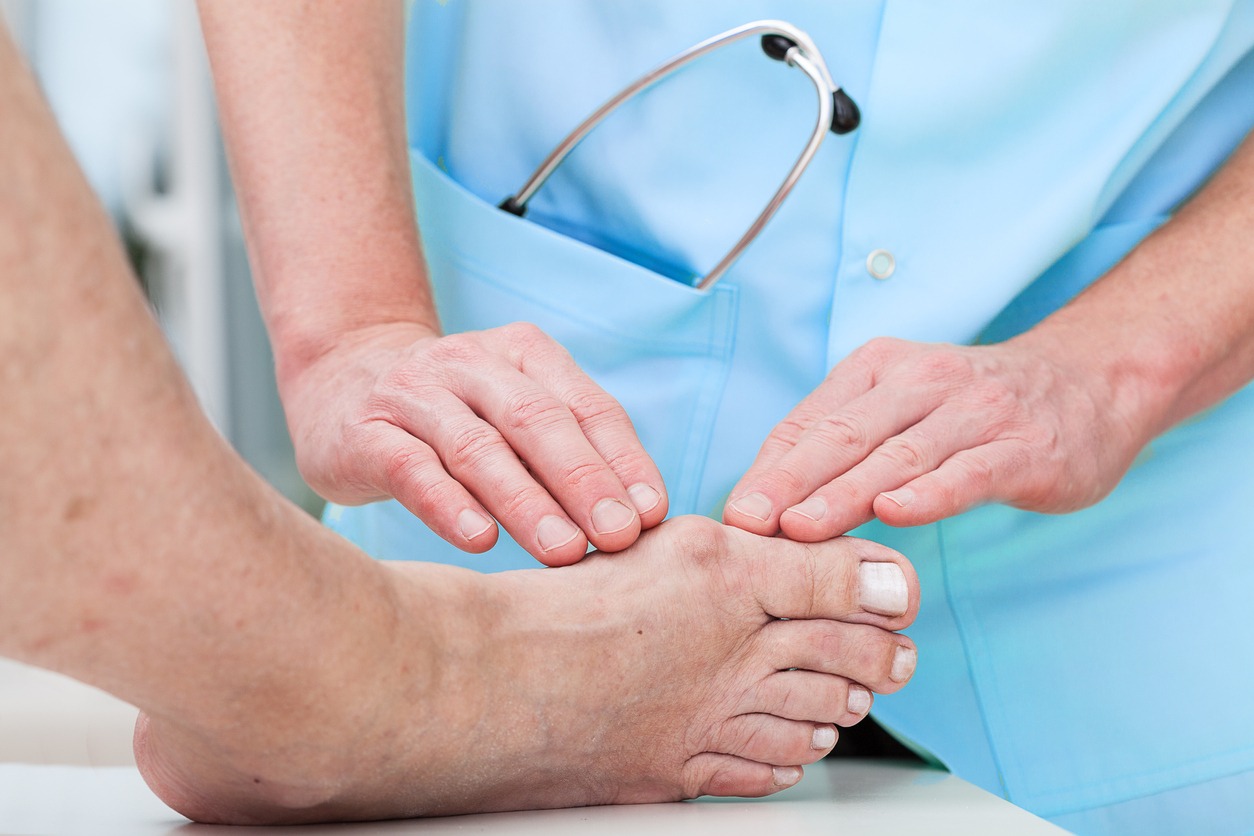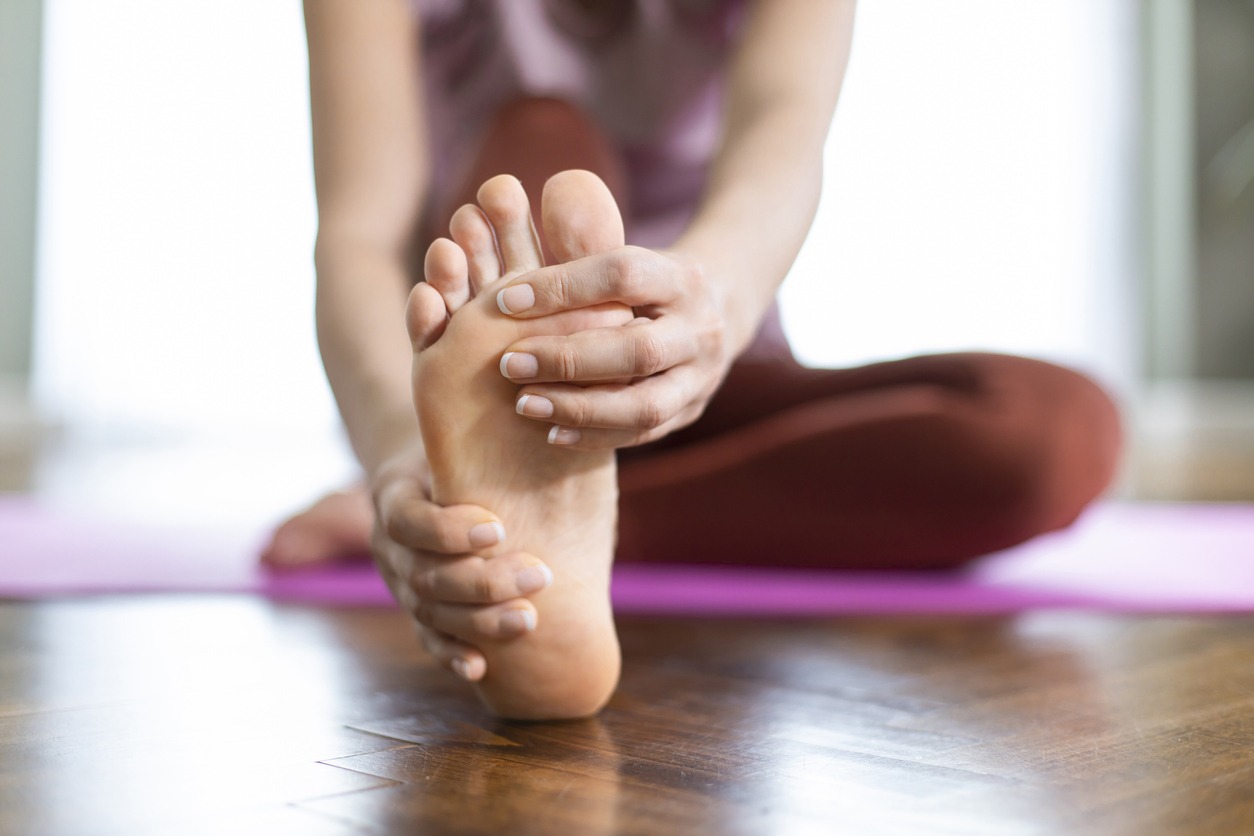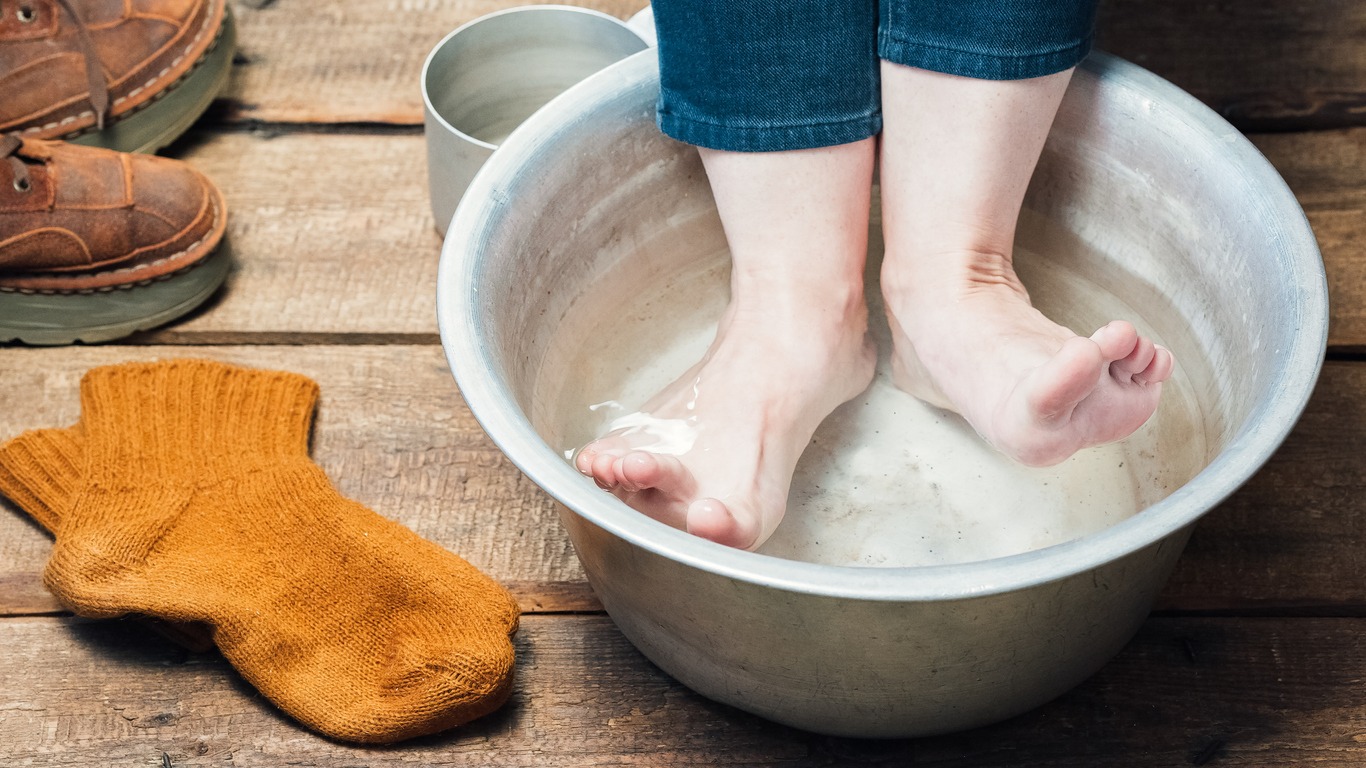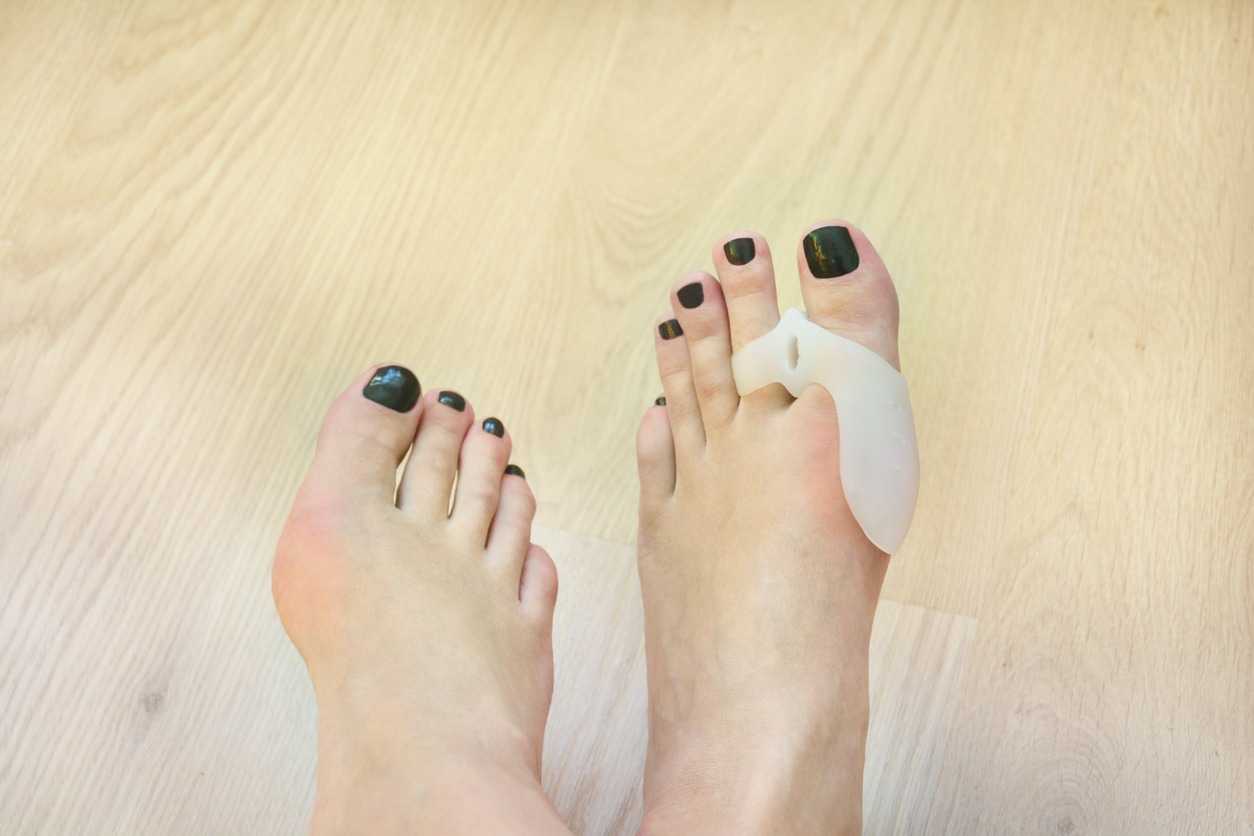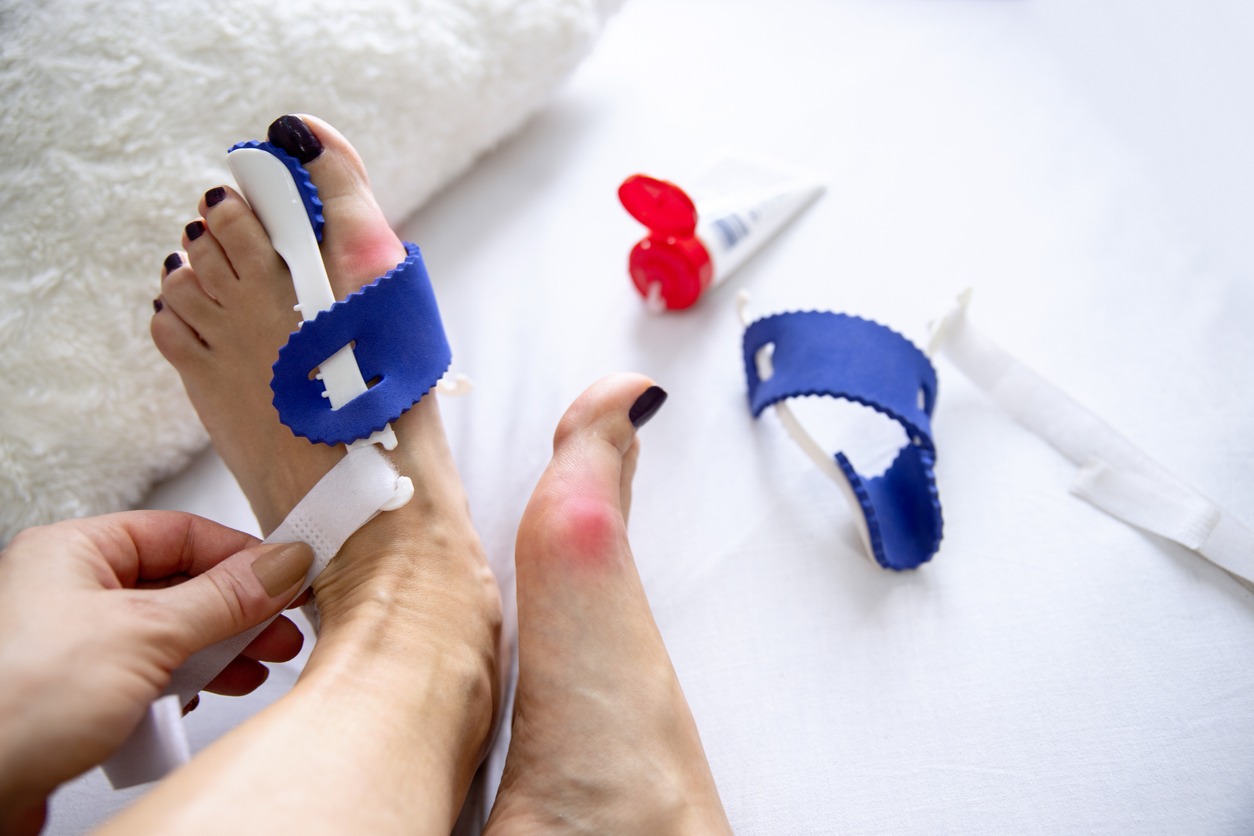Disclaimer: This article is for informational and educational purposes only and does not substitute professional medical advice. It is important to always consult a medical professional for any health issues.
There are many different foot conditions that people may experience, and some of them can be painful. Among those, one example of a painful foot condition is bunions. It is a bump that can be felt and seen protruding from the big toe. A bunion causes the big toe to bend toward the smaller toes. For people who have bunions one of the most common questions is whether or not it can be corrected without surgery.
If you are suffering from bunions, you may have considered having surgery on your feet as it is the only sure way to get rid of a bunion. According to Sole Bliss, it is estimated that 23% of all adults from 18 to 65 years old have bunions, and 35.7% of all over 65 years of age are suffering from the same condition. [1] However, not all of these people are treating their bunions with surgery.
There are several non-surgical treatment options that may help alleviate the pain, reduce swelling, and prevent bunions from becoming worse. In fact, non-surgical bunion treatments are always the first approach to provide relief. However, if these methods do not work or if you want to totally remove a bunion, surgery is really needed. If you are curious about these methods, we are here to help you. In this post, we are giving you some of the best ways to treat bunions without surgery.
What are Bunions?
Bunions are among the most common and most painful foot conditions that people may experience. This condition is also called hallux valgus. [2] It occurs when the big toe points toward the second toe, which causes a bump or prominence to develop on the inside edge of the big toe and first metatarsal bone.
Some of the common symptoms of bunions include redness in the affected area, blistering, callus formation over the bunion, bursitis, and nerve damage that may comprise numbness or sharp pain. If bunions are left untreated, the pain may also spread to nearby joints. The condition also affects women more often than men. [2]
Causes of Bunions
There are a lot of factors that may increase the chances of individuals developing bunions. Some of these include arthritis, genetics, and limb length inequalities. But based on researchers and doctors, wearing conventional shoes that make women’s feet look small and pointy may be the prime culprit.
Fashionable shoes for women and some men’s shoes usually have tapered toe boxes, which push big toes inward. In addition to those, raised heels and arch supports, which are also popular among conventional shoes, may also contribute to the development of bunions. Wearing these kinds of shoes regularly for years may lead to deformity in the feet, wherein the big toe literally stays bent, growing toward the second toe. When this occurs, the point where the bunion develops will continue to protrude further. [2]
If you notice, in cultures of people who commonly go barefoot, their toes are often the widest part of their feet, and bunions are extremely rare for them. However, in our western culture, the ball of the foot is commonly the widest point, and bunions are quite common. [2]
In addition to wearing fashionable shoes, there are also other causes of bunions, including biomechanics, pregnancy, and obesity. If you are among the millions of people out there suffering from bunions, read on to learn more about the best ways to treat bunions without surgery.
Non-Surgical Treatment Options for Bunions
Bunionectomy is a conventional treatment for a bunion. It is a type of surgery that removes part of the bulging metatarsal bone and realigns the joints forcibly. After the surgery, it is followed with prescriptions for orthotic arch supports and the wearing of highly cushioned shoes to keep the feet confined in unnatural positions. [2]
While surgery may result in some pain relief, advocates of natural foot movement argue that surgery does not confront the source of the issue and that it may be an extreme solution. It is also worth noting that bunions may still return after surgery, particularly if the conditions that caused them in the first place have not changed. [2]
If you do not like to undergo surgery to treat your bunion, there are other less invasive options available. While these treatments will not make the bulge go away, they may help relieve pain, ease swelling, and slow down the formation of bunions. To learn more about these, below are some of the non-surgical treatment options for bunions: [1]
Foot Massage and Exercise
Foot massage and exercise are among the simplest ways to treat bunions without surgery. Dedicating a few minutes to your feet each day can help, especially after long periods of standing or walking. There are a lot of simple exercises that you can perform to relieve the pain associated with bunions.
A simple massage or foot exercise may provide some bunion relief and may also help strengthen the muscle that controls the big toe. The toe stretch is among the best exercises that you can practice. You just need to point your toes straight for ten seconds and then curl them for 10 seconds. Repeat these steps ten times each day. You may also use your hand to stretch your big toe by gently pulling it over into the proper alignment. Hold the big toe for 10 seconds, then gently release it. You can repeat this exercise three times each day.
Throughout the day, it is also important to wiggle your toes, particularly if your feet are squeezed into your shoes for around ten hours a day. For a couple of minutes, take your shoes off and let your feet move to improve blood circulation. Foot massage and exercises may provide you with a simple way to treat the pain of bunions without needing to undergo surgery.
There are also foot massagers that you can use at home. To learn more about these, you can read our Guide to Selecting Foot Massagers.
Foot Bath
Treating your feet to a foot bath a few times a week may also help relieve the pain that you are feeling due to your bunion. Maintaining a healthy foot care routine is the best way to treat bunions without surgery. The better care you provide for your feet, the less likely you are to suffer from foot problems.
A simple 15-minute foot bath a few times a week may help relax your feet. You can use warm water with Epsom salt if you experience swelling. If you are looking to relax and soothe your bunions, you may add Pink Himalayan Sea Salt instead.
Ice
If you are looking for bunion relief after a long day of standing or walking, icing your feet is also a good idea. It can help reduce swelling and ease the pain caused by bunions. Simply put an ice pack in a towel and apply it to the affected area for 15 to 20 minutes. This will not heal your bunion completely, but it can provide relief if your feet are hurting after a long day.
Elevate Your Feet
Changing the position in which you rest your feet is a simple way that may help in treating your bunions without surgery. After sitting down in the same position for a long period at work, it is recommended to prop your feet at a 45-degree angle for 2 to 5 minutes to increase blood circulation and reduce pain and swelling. You can lie down and make yourself comfortable on the bed, sofa, or floor. Using a stack of pillows to elevate your legs. You need to make sure that your feet are above your head and heart.
If your work requires you to sit or stand for long periods, it is best to keep in mind that taking short breaks to rest your feet is important. It’s because walking or standing all day puts pressure on your toe joints. Therefore, putting your feet up and resting them is essential to relieving pain.
Bunion Pads
There are many bunion products available in the market today that may help treat your bunions without undergoing surgery. Among these are bunion pads. These are soft gel-filled pads that can be placed inside the shoe to stop the bunion from rubbing against the inside of the shoe. The purpose of bunion pads is to hold your foot in the correct position and prevent the bunion from rubbing and causing pain. This is a great choice if your bunions do not hurt when you are not wearing shoes.
Bunion Splints
Another popular product for bunions is a bunion splint. They will not heal bunions without surgery, but they may also provide relief. Bunion splints are bunion-correction products that aim to realign the shape of the foot by stretching or straightening the big toe to its correct position and away from the other toes. Bunion splints are best worn at night while you sleep. However, it does not provide overnight success. It may take a week or more to see any improvements after using a bunion splint regularly.
Maintain Healthy Weight
If you are aiming to treat your bunions without surgery, it is important to keep your body in good shape. It’s because our feet are under a lot of pressure to support the whole body. Simple activities like standing and walking may cause great strain on our feet if they are carrying more weight than they are able to.
If the joints of your toes are under great pressure, there is a high possibility that they will become inflamed and sore, which may worsen a bunion. Therefore, one of the best first steps to treating bunions without surgery is by maintaining a healthy weight.
Bunion-Friendly Shoes
Even if you have bunions, you can still wear fashionable shoes. However, you need to make sure that they are bunion-friendly. It is important to look for shoes that have a wide toe-box and cushioning in order to protect the difficult joints on your feet. You can also search the market for shoes that are made specifically for people with bunions. These usually have little to no arch support, little to no elevated heels, and are lightweight and flexible.
Visit a Doctor or Podiatrist
There are surely many ways to treat or find relief for bunions yourself without surgery. But it is still better to visit a doctor or a podiatrist to discuss the other options that are available which might be more effective.
Doctors may recommend non-surgical therapies wherein a professional may be able to provide them. An example is electrical stimulation, which can decrease inflammation around the bunion. Some doctors may also require you to take an X-ray so that you can see what is happening on your feet. This will also help in monitoring whether the bunion is growing and if it needs surgery or not.
Can Non-Surgical Treatments Fix Bunions?
Non-surgical treatments for bunions can help relieve symptoms, slow the progression of the condition, and improve comfort. However, keep in mind that these treatments do not correct the underlying cause, which is the misalignment of the foot bones. To make these treatments more effective, it is best to begin using them as soon as you start to develop a bunion. This way, the severity may also be reduced. [3]
Without surgery, bunions are permanent conditions. But surgery is not always needed unless when the pain is severe, if treatments are not keeping them from getting worse, or if the condition is affecting your daily activities and causing other foot concerns.
Also, even if you undergo surgery, you still need to take measures to prevent them from coming back. Even though surgery can reduce pain and improve the alignment of your foot, it is still possible for bunions to return. [3]
You may also read our Guide to Selecting the Right Foot Care Solutions for You to learn more ways on how to treat bunions.
Conclusion
There are a lot of ways to manage the symptoms of bunions, relieve the pain, and prevent them from getting worse. To get the best results, start non-surgical treatments as soon as possible when you notice that a bunion is developing on your foot. Always take good care of your feet by wearing comfortable shoes. After a long day at work, relax your feet by using ice packs, foot baths, and elevation. Most importantly, if you have a bunion, consult a podiatrist or a healthcare professional about the best treatment options, especially if the condition is painful and affecting your daily activities. We hope this post helped you learn more about how to treat bunions without surgery.
References
[1] Kay, L. (2022, November 22). 10 best ways to treat bunions without surgery. Sole Bliss. Retrieved February 28, 2023, from https://solebliss.com/blogs/news/10-best-ways-to-treat-bunions-without-surgery
[2] Martin, E. (2015, February 17). Treating bunions without surgery: Easier than you think. Softstar Blog. Retrieved February 28, 2023, from https://www.softstarshoes.com/live-bare-blog/2015/02/17/bunion-treatment-without-surgery-it-may-be-easier-than-you-think/
[3] Cronkleton, E. (2021, August 5). Treating bunions without surgery. Healthline. Retrieved February 28, 2023, from https://www.healthline.com/health/bunion-treatment-without-surgery

